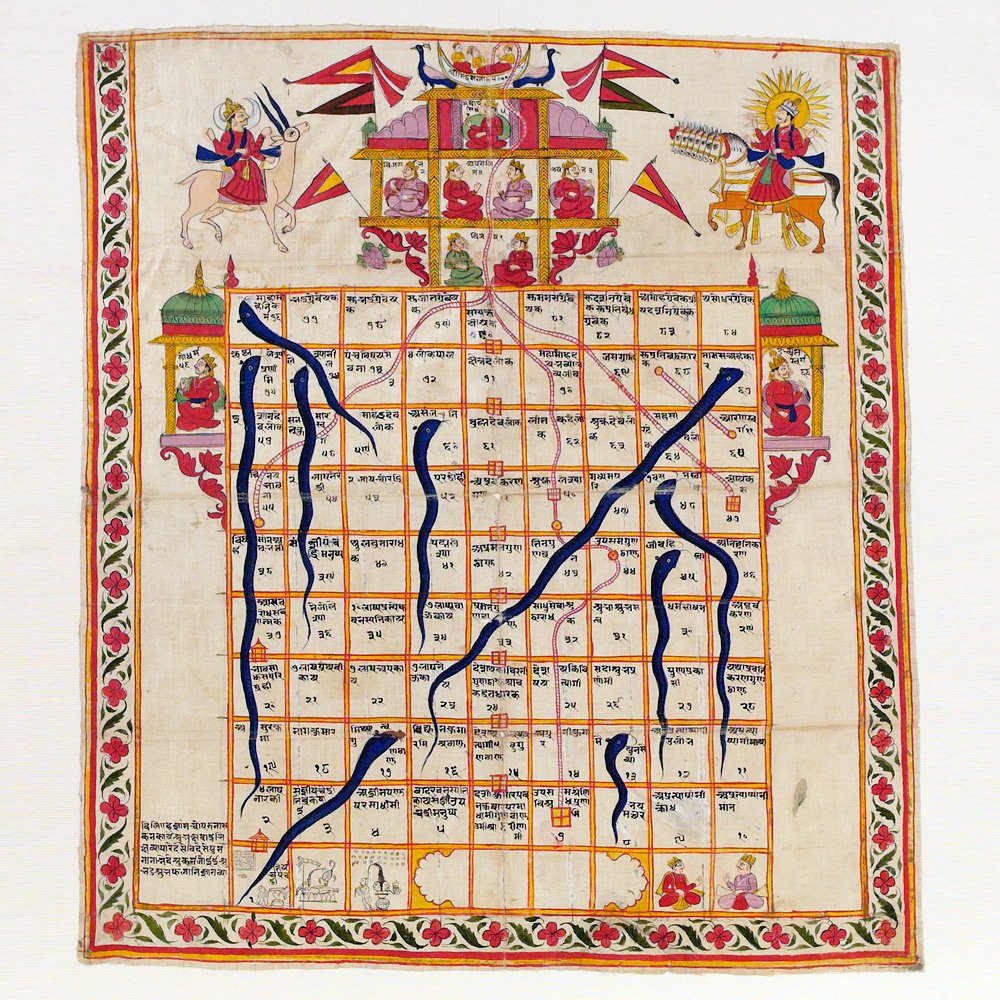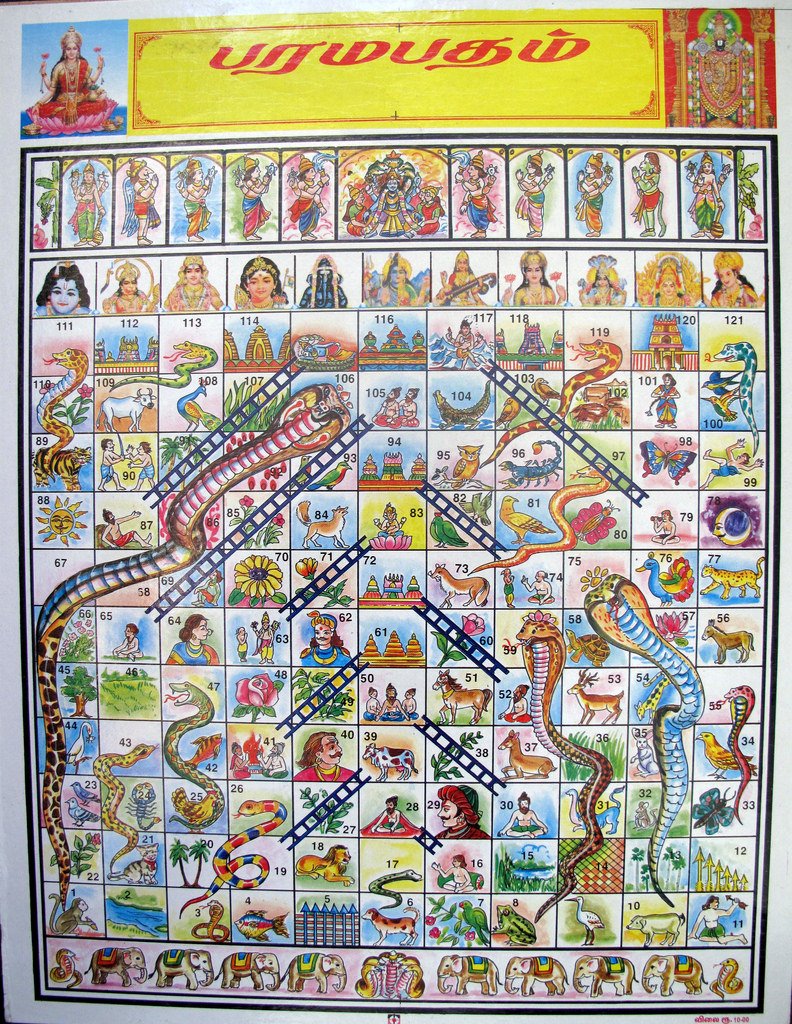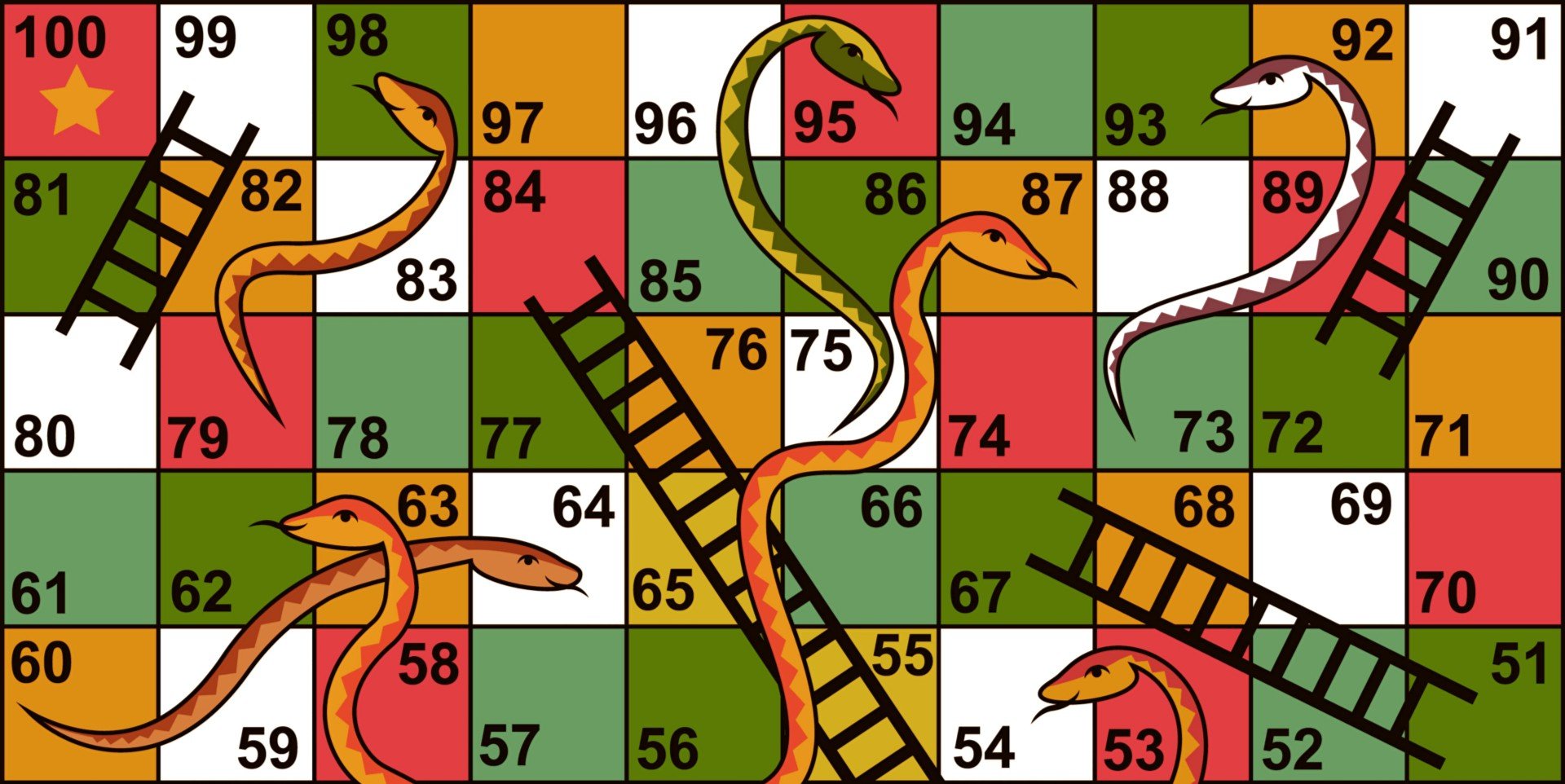We’ve all played Snakes & Ladders as kids. It was one of our favourite board games and many afternoons with cousins and friends were spent rolling a dice to see who was first to the finish line.
And to be honest, it comes as no surprise that the game originated in India. But what I learnt today is that the original version was nothing like how we know the game today!

In ancient India, the game originated as Mokshapat or Moksha Patamu. Some historians claim the game was played as early as the 2nd century BC but others are of the opinion that Swami Gyandev invented the game in 13th century AD.
The game was apparently invented to teach children a lesson in morality, about karma and kama (destiny and desire).
The ladders signify good deeds while the snakes represent all the evil we do. All the good deeds we do take us closer to 100, which symbolises moksha or salvation, while the evil we do results in rebirth as a lower life form.
The original game had more snakes than ladders to explain that the path of goodness is tougher to tread than a life of evil.

In the original game, the squares of virtue were: faith (12), reliability (51), generosity (57), knowledge (76) and asceticism (78).
And the squares of evil were: disobedience (41), vanity (44), vulgarity (49), theft (52), lying (58), drunkenness (62), debt (69), murder (73), rage (84), greed (92), pride (95) and lust (99).
The game found its way to England thanks to the colonial rulers somewhere towards the end of the 19th century. In 1943, the game was introduced in the USA as Chutes and Ladders by game pioneer Milton Bradley.

The firings were evidently more forgiving because the current version of the game has the same number of snakes and ladders, and all the symbolism has been removed.
Now it’s just another game where you win or lose with the roll of a dice and there’s no lesson in morality involved.

















